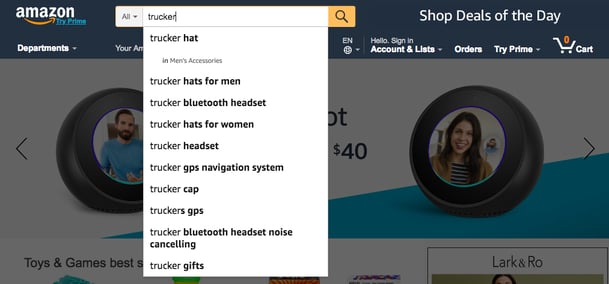
I got this question from a ecommerce leader who saw my recent At the WhiteBoard video: How to think about KPIs on the digital shelf. My answer? "It depends." The nuance and variables in whether or not it's necessary to sell on Amazon today turn out to be very revealing with how brand marketers should be thinking about Amazon today.
I don't think you need Amazon to succeed in all markets right now. Many of our customers don't sell on Amazon. There are B2B, medical, food service, industrial products and the like, but even for consumer products you see upmarket brands specifically avoid Amazon due to concern about brand dilution; that is, if you appear on Amazon does it make you more of a commodity? For example we work some of our customers who have luxury brands do not sell on Amazon. High end fashion similarly is not present on Amazon. Similarly, you see brands that are more direct-to-consumer and that have some kind of mission avoid Amazon. Examples include Brandless, Everlane, Untuckit, Warby Parker, etc.
That said, there is risk to a strategy that does not include Amazon. Both Nike and Birkenstock avoided Amazon for fear of brand dilution, but ultimately counterfeit products caused a lot of damage, so they participated to take ownership of the channel and drive down counterfeits.
My advice is to view Amazon as a search bar more than a transacting retailer. Under that lens, if you're not on Amazon you're missing all the consumer that look for products like yours. Brands must ask themselves, where are the majority of consumers searching for products like mine? If you are Toyota or Ford, your consumers aren’t searching Amazon for “truck.” But they might be searching Google or Kelley Blue Book. You’ll want to make sure you are sending data so that is where you want to send your product content and make sure you show up correctly there.
Even if your typical consumer is not searching Amazon for your generic product category, there may be an opportunity for brands to sell new product lines and get recognition on Amazon.

Truck drivers may look for accessories like hats, gps, or bluetooth headsets on Amazon. Consider accessories to your main products in order to drive brand visibility! Imagine, someone's looking for "trucker bluetooth" on Amazon. They find Toyota branded headset with a 5 star review. They think, “Oh, they also make awesome trucks. I should move them to the top of my list or see what their new model is capable of.” That kind of thing. Brands can sell accessories as a 3P to drive overall awareness.
To sum up: Don't look at Amazon as simply another sales channel & a way to move your products. Look at them as the product search bar (at least in the US) of the internet for most kinds of products, and figure out how to use that to your advantage.
Written by: Rob Gonzalez
Rob Gonzalez (he/him) is one of the co-founders of Salsify and is also the co-host of the “Unpacking the Digital Shelf” podcast. Previously, he ran product management and marketing for Cambridge Semantics.
Recent Posts
5 Ecommerce Tips To Help Marketers Enter the New Year Stress-Free
How Many Digital Sales Channels Do Shoppers Review Before Purchasing Products?
What the Data Says About Consumer Interest in AI Shopping Agents
Subscribe to the Below the Fold Newsletter
Standing out on the digital shelf starts with access to the latest industry content. Subscribe to Below the Fold, our monthly content newsletter, and join other commerce leaders.


.svg)